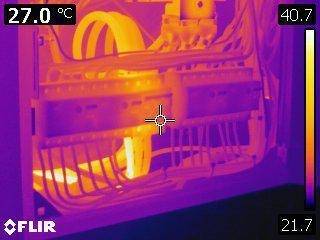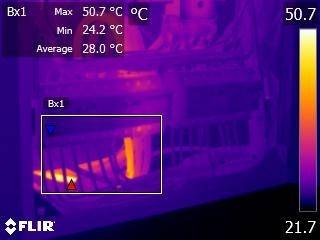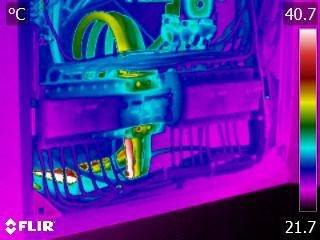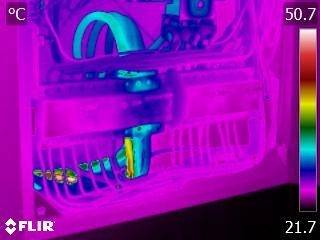The issue with Histogram Equalisation on your thermal imaging camera
One of the regular issues with FLIR thermal imagers has been the default to have a histogram equalised image. This is where the image is processed to improve the contrast by spreading out the most frequent intensity values.
We can see this issue in these four images.
In the first image, Ironbow, Crosshairs and Histogram Equalisation is used. The thermographer may have pointed the crosshairs directly to the connection, but there would only be a couple of degrees difference - the span within the image shows a max temperature of 40.7°C on the cable as the equalisation add unused colours (not representative of measured temperature) to smooth the contrast.

In the second image, this has been switched to Linear Temperature palette with a box area and we can now start to see that this isn't a connection issue and that the problem actually exists within the cable. Notice that in linear temperature setting the maximum temperature is now 50.7°C.

The third image again uses Histogram Equalisation - but using the Rainbow palette can provide the thermographer with more information and evidence to suggest that the fault may be elsewhere to the connection - this is one of the key reasons why rainbow is the more suitable palette for electrical thermography surveys. Note when switching to histogram equalisation the maximim temperature dropped back down to 40.7°C.

In the 4th image, we stay in Rainbow and now go back to Linear Temperature palette - back to 50.7°C.. If we thermally tune the image it becomes very clear that the issue is within the cable at the entry point.

So to conclude, using the histogram equalisation setting on the imager is designed to improve image contrast by adding extra false information to smoothen the digital curve. Doing this loses accuracy in precise pixel information and this can render a thermal anomaly hard to decipher.
It's important to understand your imager when doing quantitative analysis. This isn't point and shoot.
FLIR has pushed a recent update to some of their thermal imagers and the ability to switch off the automatic Histogram Equalisation.
Keep it off.
